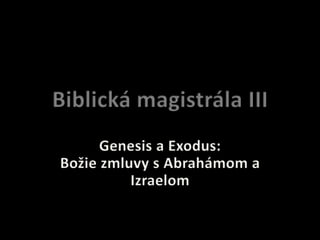Editor's Notes
- Green is the line of promise, red the line not of promiseThree dashes are linear genealogiesAsterisk denotes narratives< denotes a segmented genealogyOnce we get to Abraham, the seed of promise is denoted as being inside or outside the land of rest/blessing (Ishmael and Esau are outside the promised land, location is also associated with Shem, Ham, and Japeth, so for every seed not of promise the location is important, and more so once the land is promised to Abraham)Note that we have one תוֹלְדוֹת followed by three sets of three תוֹלְדוֹת followed by a final תוֹלְדוֹת.In the middle, the first two begin with genealogies that trace the seed, this is not necessary for the third because there is no genealogy to trace from Abraham to Isaac. The next in the sequence is the narrative portion (Noah and the flood narrative, Terah and the Abraham narrative, Isaac and the Jacob narratives). The narrative portion is the most important portion of the תוֹלְדוֹת section as seen by the fact that each section contains a narrative portion. This is the core of the section. Also, the narrative portion traces the line of promise. Each section ends with a genealogy that traces the line not of promise with the exception of the first and the last. Also the third of the three center sections ends with two Esau genealogies. This may be to fill out the pattern established by the first two.
- Green is the line of promise, red the line not of promiseThree dashes are linear genealogiesAsterisk denotes narratives< denotes a segmented genealogyOnce we get to Abraham, the seed of promise is denoted as being inside or outside the land of rest/blessing (Ishmael and Esau are outside the promised land, location is also associated with Shem, Ham, and Japeth, so for every seed not of promise the location is important, and more so once the land is promised to Abraham)
- Green is the line of promise, red the line not of promiseThree dashes are linear genealogiesAsterisk denotes narratives< denotes a segmented genealogyOnce we get to Abraham, the seed of promise is denoted as being inside or outside the land of rest/blessing (Ishmael and Esau are outside the promised land, location is also associated with Shem, Ham, and Japeth, so for every seed not of promise the location is important, and more so once the land is promised to Abraham)












